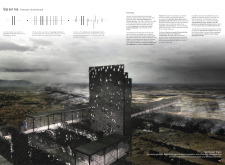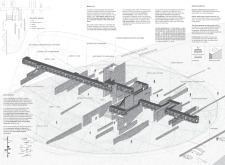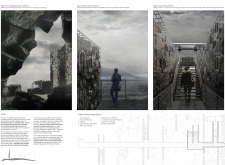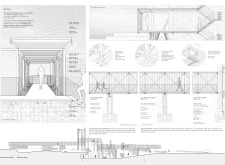5 key facts about this project
Spenna is located along the geologic boundary between the Eurasian and North American tectonic plates in Iceland. The design reflects the concept of tension, showcasing the active geological processes of the area. By interpreting the fault line in architectural form, the project invites visitors to engage with the powerful natural forces that shape the landscape.
Circulation Path
The design incorporates a linear circulation path that deforms to recreate the experience of moving across geological boundaries. As visitors move through this space, they encounter a series of architectural fault lines that evoke the sensation of tension and release. The path balances moments of discovery with selective views of the landscape, encouraging exploration and curiosity.
Observation Tower
A key feature is the observation tower, which serves as a focal point for views of the geological fault line and its surroundings. This tower represents the culmination of geological processes and enables visitors to witness the effects of long-term tectonic activity. The form of the tower emphasizes the relationship between people and nature, particularly the themes of tension and resolution within the landscape.
Materiality
Local materials play a crucial role in the design, with gabion walls made from indigenous volcanic rock. These walls enhance the connection to the site and provide structural integrity, able to withstand the movements of the ground. In addition, cast-in-place concrete foundations and bearing walls support the architectural structure, offering durability while respecting the surrounding environment.
Design Details
The observation tower features strategically placed glass panels that provide thermal protection and clear views of the landscape. Gaps in the gabion walls allow natural light to enter, enriching the interior spaces and creating an engaging visitor experience. These thoughtful design details deepen the visitor's connection to the geological features, enhancing the understanding of the forces that shaped the land and allowing a unique perspective on the dynamic scenery.






















































